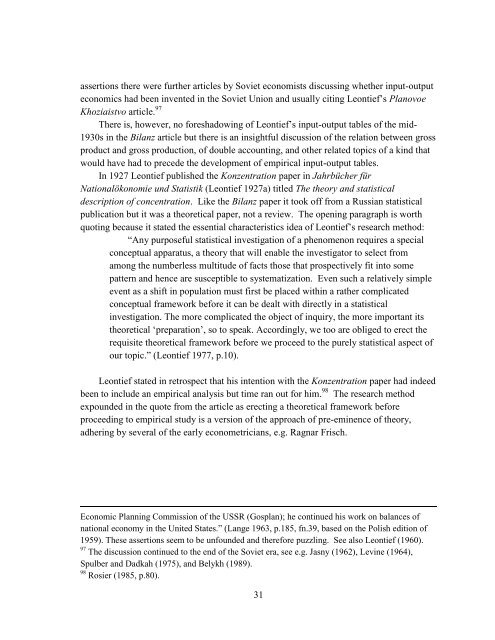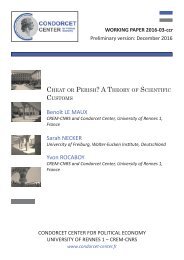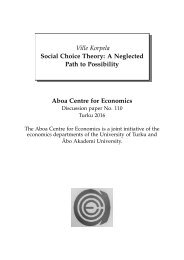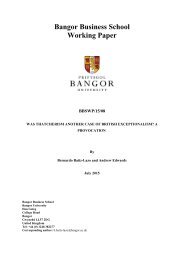MEMORANDUM
n?u=RePEc:hhs:osloec:2016_018&r=hpe
n?u=RePEc:hhs:osloec:2016_018&r=hpe
You also want an ePaper? Increase the reach of your titles
YUMPU automatically turns print PDFs into web optimized ePapers that Google loves.
assertions there were further articles by Soviet economists discussing whether input-output<br />
economics had been invented in the Soviet Union and usually citing Leontief’s Planovoe<br />
Khoziaistvo article. 97<br />
There is, however, no foreshadowing of Leontief’s input-output tables of the mid-<br />
1930s in the Bilanz article but there is an insightful discussion of the relation between gross<br />
product and gross production, of double accounting, and other related topics of a kind that<br />
would have had to precede the development of empirical input-output tables.<br />
In 1927 Leontief published the Konzentration paper in Jahrbücher für<br />
Nationalökonomie und Statistik (Leontief 1927a) titled The theory and statistical<br />
description of concentration. Like the Bilanz paper it took off from a Russian statistical<br />
publication but it was a theoretical paper, not a review. The opening paragraph is worth<br />
quoting because it stated the essential characteristics idea of Leontief’s research method:<br />
“Any purposeful statistical investigation of a phenomenon requires a special<br />
conceptual apparatus, a theory that will enable the investigator to select from<br />
among the numberless multitude of facts those that prospectively fit into some<br />
pattern and hence are susceptible to systematization. Even such a relatively simple<br />
event as a shift in population must first be placed within a rather complicated<br />
conceptual framework before it can be dealt with directly in a statistical<br />
investigation. The more complicated the object of inquiry, the more important its<br />
theoretical ‘preparation’, so to speak. Accordingly, we too are obliged to erect the<br />
requisite theoretical framework before we proceed to the purely statistical aspect of<br />
our topic.” (Leontief 1977, p.10).<br />
Leontief stated in retrospect that his intention with the Konzentration paper had indeed<br />
been to include an empirical analysis but time ran out for him. 98 The research method<br />
expounded in the quote from the article as erecting a theoretical framework before<br />
proceeding to empirical study is a version of the approach of pre-eminence of theory,<br />
adhering by several of the early econometricians, e.g. Ragnar Frisch.<br />
Economic Planning Commission of the USSR (Gosplan); he continued his work on balances of<br />
national economy in the United States.” (Lange 1963, p.185, fn.39, based on the Polish edition of<br />
1959). These assertions seem to be unfounded and therefore puzzling. See also Leontief (1960).<br />
97 The discussion continued to the end of the Soviet era, see e.g. Jasny (1962), Levine (1964),<br />
Spulber and Dadkah (1975), and Belykh (1989).<br />
98 Rosier (1985, p.80).<br />
31





